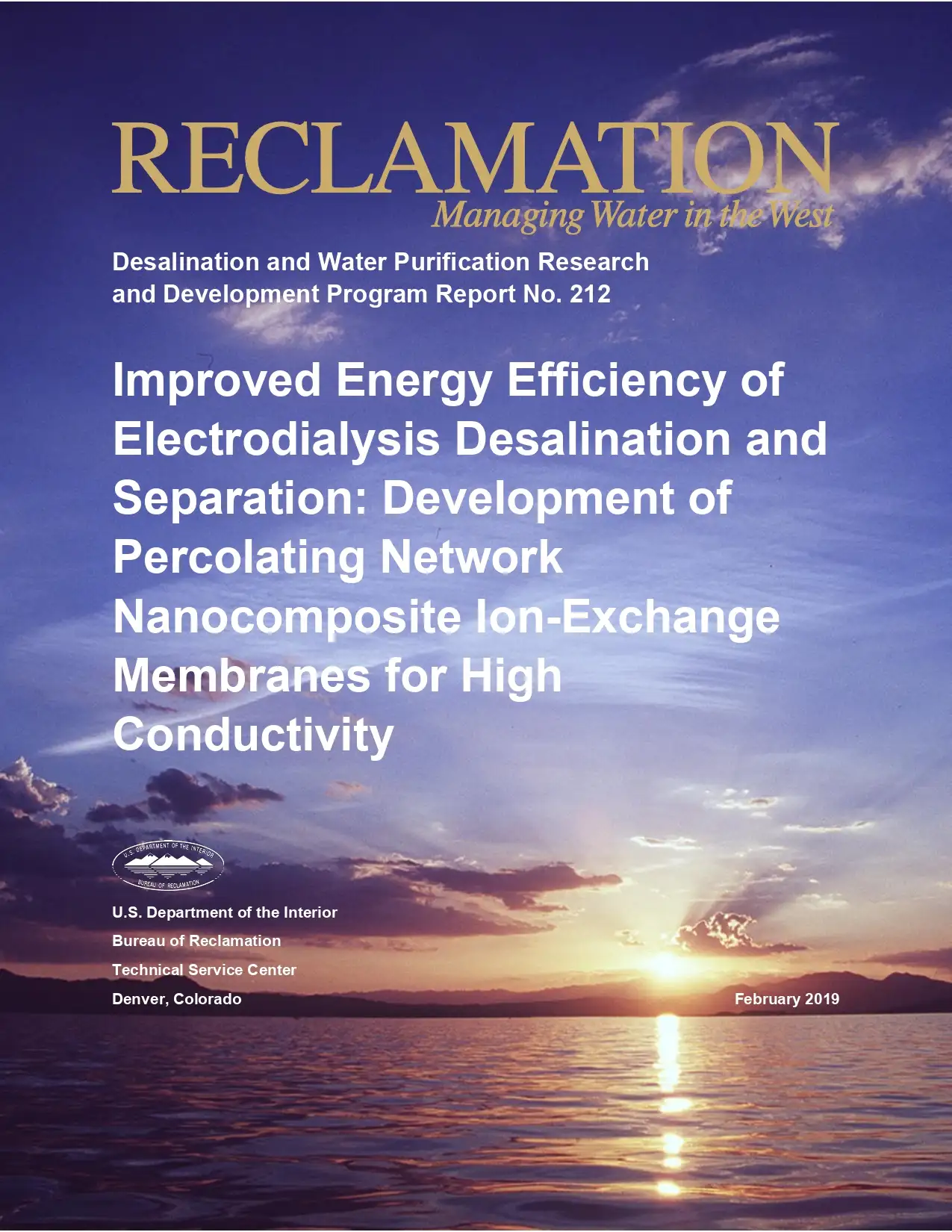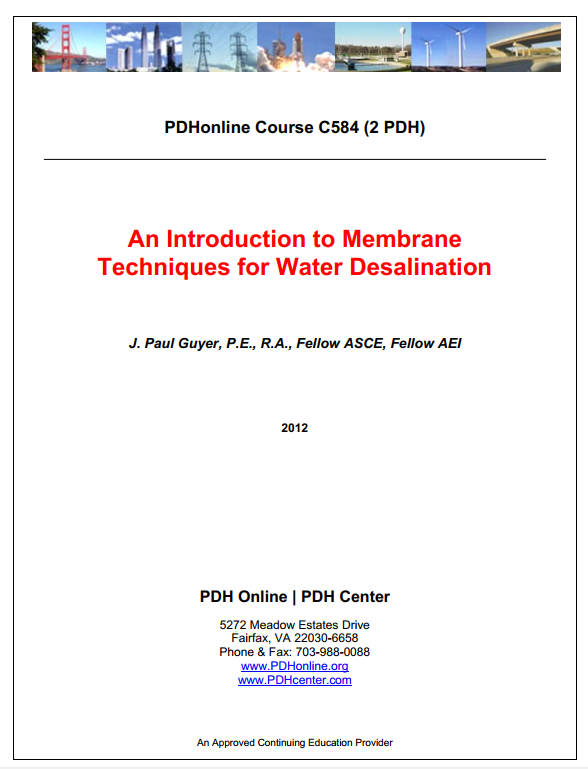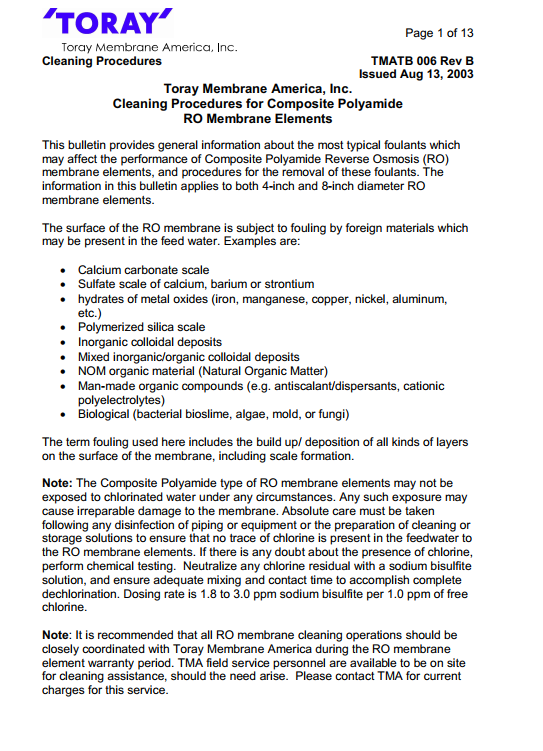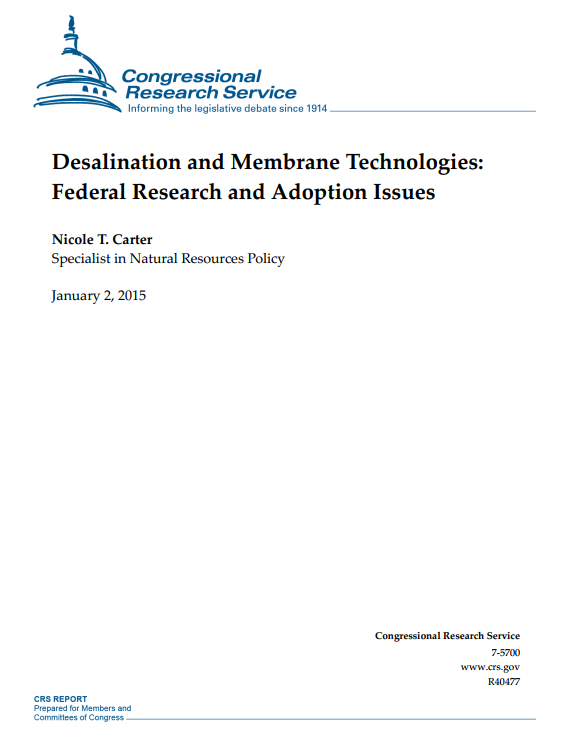Improved Energy Efficiency of Electrodialysis Desalination and Separation: Development of Percolating Network Nanocomposite Ion-Exchange Membranes for High Conductivity
Improved Energy Efficiency of Electrodialysis Desalination and Separation
Credit to: https://www.usbr.gov/
25 February, 2019
Abstract:
Nanocomposite cation exchange membranes have been fabricated by incorporating sulphonate carbon nanotubes into sulphonate poly(p-phenylene oxide) polymer matrix (0-20 w/w%). The percolating network of carbon nanotubes can advantageously lower the intrinsic resistivity of the nanocomposite membrane while the charged functional moieties intensifies the Donnan exclusion effect, thus sustaining a high perm selectivity. Nanocomposite IEMs exhibit improved conductivity while maintaining perm selectivity. Intrinsic resistivity, inverse of conductivity, decreases 25 to 29 percent, with 20 percent incorporation of sCNT. Enhancement in conductivity is more pronounced for membranes with lower swelling degree. The nanocomposite fabrication strategy can advance the perm selectivity-conductivity tradeoff to obtain IEMs with improved performance. The electro dialysis desalination of brackish water to drinking water standards (1,000 ppm TDS) has been demonstrated with the fabricated nanocomposite membranes. Projected energy savings of about 13.3 to 15.8 percent for brackish water desalination is achievable with nanocomposite membranes. This study demonstrates the rational use of nanomaterials as a promising platform to advance the conductivity-perm selectivity trade-off governing conventional IEMs.
Only logged in customers who have purchased this product may leave a review.















Reviews
There are no reviews yet.